The Role of Pressure in Making the Best Espresso
When it comes to making the perfect cup of espresso, pressure plays a crucial role in extracting the full flavor and aroma from the coffee beans. Here are some key points to consider:
1. Extraction Efficiency
Pressure is essential for extracting the soluble compounds from the coffee grounds. The ideal pressure range for espresso extraction is typically between 9 and 10 bars. This level of pressure helps to ensure that the water passes through the coffee grounds at the right rate, allowing for optimal extraction of flavors without over-extracting bitter compounds.
2. Crema Formation
The crema on top of a well-made espresso is a sign of quality and freshness. Pressure plays a key role in the formation of crema, as it helps to emulsify the oils in the coffee beans and create a rich, velvety layer on top of the espresso. The right amount of pressure is needed to achieve the perfect balance of crema thickness and texture.
3. Flavor Profile
The pressure used during espresso extraction can significantly impact the flavor profile of the final brew. Higher pressure can result in a more intense and full-bodied espresso, while lower pressure may produce a milder and smoother taste. Baristas often adjust the pressure based on the specific characteristics of the coffee beans being used to bring out the best flavors.
4. Consistency
Consistency is key when it comes to making great espresso, and pressure plays a critical role in achieving this. Maintaining a consistent pressure throughout the extraction process helps to ensure that each shot of espresso is brewed to the same high standard, with consistent flavor, crema, and overall quality.
5. Extraction Time
Pressure also influences the extraction time of espresso, which is crucial for achieving the perfect balance of flavors. Too short of an extraction time can result in under-extracted espresso that lacks depth and complexity, while too long of an extraction time can lead to over-extracted espresso that tastes bitter and harsh. The right pressure helps to control the flow rate of water through the coffee grounds, leading to an optimal extraction time.
6. Equipment Quality
The quality of the espresso machine and grinder used can also impact the pressure levels achieved during extraction. High-quality equipment is designed to maintain consistent pressure levels and ensure even water distribution over the coffee grounds. Investing in reliable equipment is essential for making the best espresso possible.
7. Training and Skill
While pressure is a critical factor in making great espresso, it is also important to note that skill and training play a significant role in achieving the perfect extraction. Baristas must have a deep understanding of how pressure impacts the brewing process and be able to make real-time adjustments to achieve the desired flavor profile. Practice and experience are key to mastering the art of espresso-making.
In conclusion, pressure plays a vital role in making the best espresso by influencing extraction efficiency, crema formation, flavor profile, consistency, extraction time, equipment quality, and the skill of the barista. By understanding and mastering the role of pressure in espresso extraction, coffee enthusiasts can enjoy a truly exceptional cup of espresso.
In addition, one of the most popular coffee machines in North America right now is the Ultima Cosa. Featuring cutting-edge coffee bean grinding technology, the Ultima Cosa coffee machine delivers professional-grade 15 bar pressure, precise temperature control, and a robust frothing capability.



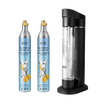
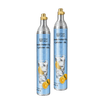




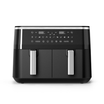
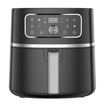
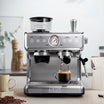







Leave a comment
This site is protected by hCaptcha and the hCaptcha Privacy Policy and Terms of Service apply.